|
|
Invited speakers
|

Dr.
Khalil Amine, Argonne National Laboratory, USA
|
Chair of the energy storage workshop.
Dr. Khalil Amine is an Argonne Distinguished Fellow and the leader of the Advanced Battery Technology team at Argonne National Laboratory, where he is responsible for directing the research and development of advanced materials and battery systems for HEV, PHEV, EV, grid, satellite, military and medical applications. Dr. Amine is also the Deputy Director of the US/China clean energy research center and serves as a committee member of the U.S. National Research Consul at US Academy of Sciences on battery related technologies. He is an adjunct professor at Stanford University. Among his many awards, Dr. Amine is a 2003 recipient of Scientific America’s Top Worldwide 50 Researcher Award, a 2008 University of Chicago distinguished scientist award, a 2009 recipient of the US Federal Laboratory Award for Excellence in Technology Transfer, 2013 DOE Vehicle technologies office award and is the five-time recipient of the R&D 100 Award, which is considered as the Oscar of technology and innovation. In addition, he was awarded the ECS battery technology award, the international battery association award, the Elsevier technology award, and the international coalition for energy storage and innovation award. Dr. Amine holds over 198 patents and patent applications and has 549 publications with google h-index of 108. From 1998-2017, Dr. Amine was the most cited scientist in the world in the field of battery technology. He serves as the president of IMLB. He is also the chairmen of the international automotive lithium battery association, ECS fellow, Fellow of Hong Kong Institute of advanced studies, and associate editor of the journal of Nano-Energy.
|
|
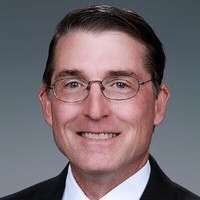
Dr. Jud
Virden, Northwest National Laboratory, USA
|
Title: Is your grid ready? The convergence of renewables, energy storage and electric vehicles.
Keynote speaker
Dr. Virden is Associate Laboratory Director for the Energy and Environment Directorate (EED) at Pacific Northwest National Laboratory (PNNL). He leads a team of 1,000 staff in delivering science and technology solutions for energy and environmental challenges. These challenges include increasing our nation's energy capacity; reducing dependence on imported oil; and detecting, mitigating and preventing the environmental impacts of legacy waste and energy generation and use. In fiscal year 2013, EED's research sales to government and industry clients totaled $235 million.
Dr. Virden joined PNNL in 1991 as a researcher, working in non-thermal plasma and Hanford Tank Waste Processing programs. During his two decades at the Laboratory, he has served in many key roles in organizations within PNNL, including technical group manager, program manager, deputy associate laboratory director, director of business operations, and director of energy market sectors. Most recently he was EED's chief science and technology officer, managing the directorate's science and technology capabilities to ensure they impact important energy and environment challenges. In 2007, the Department of Energy (DOE) tapped him to serve on the Laboratory Working Group, which examined DOE's science and applied missions.
As part of Dr. Virden's involvement in the strategic direction and growth of PNNL energy programs, he has helped shape national public/private partnerships critical to moving from discovery to deployment. He has gained first-hand knowledge of different organizations and their R&D challenges through special assignments, including a 2009 activity at DOE Headquarters to assist in development of U.S.-China collaborative research priorities, and a two-year assignment in Flint, Mich., as a PNNL employee working with General Motors, Ford and Chrysler and the United States Council for Automotive Research (USCAR). In this role, he initiated and developed multiple government/industry advanced technology development projects. Dr. Virden served as co-chair for the DOE 21st Century Truck Partnership National Laboratory Council, which created long-range technology goals for more efficient heavy vehicles, and he participated in the DOE USCAR Partnership for a New Generation of Vehicles. He also contributed to the National Research Council 2003 Assessment of the Office of Naval Research's Marine Corps Science and Technology Program. Dr. Virden's experiences have provided him with a unique and broad systems view of the overall energy infrastructure, the links between energy and environment, and the challenges of creating a clean energy future.
Dr. Virden holds two U.S. patents and has received R&D 100 and Federal Laboratory Consortium awards for nonthermal plasma technology, a Discover Award with Massachusetts Institute of Technology for fuel reformation technologies, and he contributed to a Financial Times Global Automotive Award for PNNL's assistance to Delphi's nonthermal plasma technology for automotive applications. He currently serves on the American Council for an Energy Efficient Economy board, the University of Michigan Energy Institute’s external advisory committee, and the Oregon Built Environment and Sustainable Technologies Center (Oregon BEST) board. Dr. Virden earned a bachelor's degree and doctorate in Chemical Engineering from the University of Washington.
|
|

Dr. Jun
Liu, PNLL, USA
|
Title: Pathways for High Energy and Cost Effective Energy Storage Technologies.
Dr. Liu possesses a strong background in materials synthesis, colloidal and surface science, and high-resolution electron microscopy. He joined PNNL in 1992, became a Laboratory Fellow in 2000, and over time initiated and led a broad range of basic and applied research programs in materials science.
In 2001, he left PNNL for a position with Lucent Bell Laboratories, and later Sandia National Laboratories, where he served as manager of the Chemical Synthesis and Nanomaterials Department, and as a thrust leader in the Center for Integrated Nanotechnologies. Dr. Liu returned to PNNL in 2005 to head the synthesis task within the catalysis initiative, and also led the Transformational Materials Science Initiative, as well as energy storage research. In addition, he served as the Director of the Energy Processes and Materials Division, and currently serves as the Cross-Science Lead on the Joint Center for Energy Storage Research, a DOE Energy Innovation Hub in which PNNL is a partner.
Dr. Liu has more than 400 peer reviewed publications, has received more than 55 U.S. patents. He was named a Distinguished Inventor of Battelle in 2007 and was selected as PNNL's 2012 Inventor of the Year. He holds a bachelor's degree in Chemical Engineering from Hunan University, a master's degree in Ceramic Engineering from the University of Washington, and a doctorate in Materials Science and Engineering, also from the University of Washington.
|
|
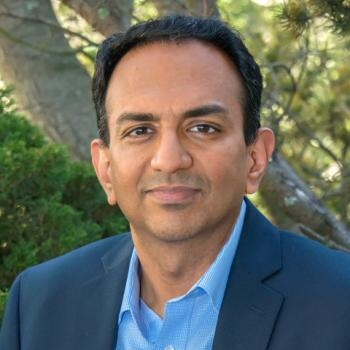
Dr. Venkat Srinivasan,
Argonne National Laboratory,
USA
|
Title: Present status and future prospects for batteries for vehicle and grid.
Dr. Venkat Srinivasan is a Scientist at Argonne National Laboratory (ANL), the Director of the Argonne Center for Collaborative Energy Storage Science (ACCESS) and Deputy Director of the Joint Center for Energy Storage Research (JCESR, the battery “Hub”). His research interest is in developing next-generation batteries for use in vehicle and stationary applications.Dr. Srinivasan and his research group develop continuum models for battery materials and combine them with experimental characterization to help design new materials, electrodes, and devices.
Dr. Srinivasan has extensive experience with numerous battery chemistries, including Li-ion systems, Li-S and Li-air batteries, Ni-MH, lead acid, and alkaline Zn-MnO2 batteries. In addition, Dr. Srinivasan has worked on flow batteries for grid storage applications and electrochemical capacitors for high-power applications. His recent research involves understanding methods to prevent dendrite growth in Li-metal cells, estimating transport properties from electrochemical and NMR methods, incorporating microstructural details into continuum simulations, and visualizing and modeling battery manufacturing processes.
Prior to joining Argonne National Lab, Dr. Srinivasan was a scientist at Lawrence Berkeley National Lab, where he served, at various times, as the technical manager of the Batteries for Advanced Transportation Technologies (BATT) Program, as the acting director of the BATT program, as department head of the Energy Storage and Distributed Resources (ESDR) department at LBNL, and the interim director of the ESDR Division. Dr. Srinivasan joined the scientific staff at LBNL in 2003 after postdoctoral studies at the University of California, Berkeley and Pennsylvania State University. He received his PhD from the University of South Carolina in 2000. He is also the author of a popular battery blog titled, “This Week in Batteries” found at
http://thisweekinbatteries.blogspot.com/
|
|
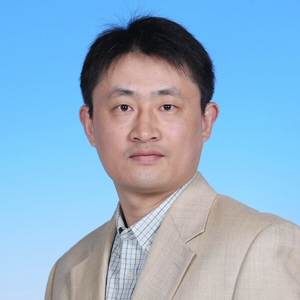
Prof.
Minhua Shao,
HKUST, Hong Kong
|
Title: Advanced Electrocatalysts for Fuel Cells.
Professor Minhua Shao is Associate Professor of Chemical and Biological Engineering. He earned B.S. and M.S. degrees in chemistry from Xiamen University in China, and a Ph.D. degree in materials science and engineering from State University of New York at Stony Brook in 2006. Before joining the HKUST, Prof Shao worked at UTC Power on fuel cells and Ford Motor Company on lithium-ion batteries in the United States. He was a UTC Technical Fellow during his tenure with UTC Power. Prof Shao’s research interests include advanced materials for energy conversion and storage devices, and fundamental understandings of related electrochemical reactions. Prof Shao has particular interests in fuel cells, lithium-ion batteries, CO2 reduction, water splitting, electrocatalysis, DFT calculations and nanomaterials. He has published 90 peer-reviewed papers with over 7000 citations (h-index = 35), 1 edited book, 5 book chapters, and filed more than 30 patent applications (15 issued). He has received a number of awards, including the Supramaniam Srinivasan Young Investigator Award (ECS Energy Technology Division), the Student Achievement Award (ECS Industrial Electrochemistry and Electrochemical Engineering Division), the President’s Award to Distinguished Doctoral Students (Stony Brook University), the Chinese Government Award for Outstanding Self-Financed Students Abroad, and the Dr. Mow Shiah Lin Award (Brookhaven National Laboratory). He is an Associate Editor of Journal of the Electrochemical Society (2017- ) and Editorial Advisory Board Member for Journal of Applied Electrochemistry, Catalysts, and Materials Technologies.
|
|
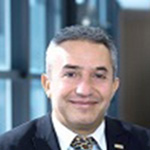
Dr. Karim Zaghib,
Director
of IREQ, Canada
|
Title: Solid state lithium metal batteries : science and technology.
Dr. Karim Zaghib is the Director of – Energy Storage and Conversion at Hydro-Québec’s research institute, IREQ, ranks among the researchers most highly cited by their peers, as established by Thomson Reuters’ The World’s Most Influential Scientific Minds 2015 and 2016. Since joining IREQ more than 20 years ago, he has contributed to the development of lithium-ion battery materials for electric transportation and energy storage applications. Dr. Zaghib has authored 368 scientific articles and edited or co-edited nearly 20 books, and is a joint inventor in 550 patents. An active member of the Electrochemical Society, he was awarded the Energy Technology Division Award 2009 and the Battery Division Technology Award 2013, and was elected ECS Fellow in 2011. He also received the International Electric Research Exchange (IERE) Research Award in 2008 and the International Battery Association (IBA) Research Award in 2010. Karim Zaghib holds a Masters (1987) and a Ph.D. (1990) in electrochemistry from the Institut national polytechnique de Grenoble in France. From 1990 to 1992, he engaged in postdoctoral research financed by Saft, a world leader in high-tech batteries, and by the armament branch of France’s department of defense. From 1992 to 1995, he was guest researcher for the Japanese Ministry of International Trade and Industry (METI). In 2002, he received the HDR (Habilitation à diriger des recherches) in materials science from the Université Pierre et Marie Curie (France). Thanks to Dr. Zaghib’s work, Hydro-Québec was the first company in the world to use lithium iron phosphate in Li-ion battery cathodes and to develop natural graphite and nanotitanate anodes. The most recent advances resulting from his work, which were achieved in collaboration with research centres based in Singapour and Spain, among other countries, will pave the way for the next generation of electric vehicle batteries. His research also led to the creation of Technologies Esstalion, a joint venture with Sony Corporation whose mission is to develop large-scale energy storage systems.
|
|
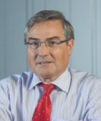
Prof.
Teófilo Rojo,
University of the Basque Country & CIC Energigune, Spain.
|
Title: Exploring Na-ion technological advances: pathways from energy to power.
Teófilo Rojo received his PhD from the University of the Basque Country in 1981. He has spent various research periods at the Institute of Condensed Matter Chemistry in Bordeaux (France), the King's College (University of London, UK), the University of Cambridge (UK) and the University of Campinas (Brazil). Since 1992 he has been Full Professor of Inorganic Chemistry at the University of the Basque Country (UPV-EHU). He has supervised near 30 PhD thesis and more than 45 graduate and master thesis.
He is co-author of over 500 articles with more than 16000 citations and an h-index near 60. He has co- authored twelve book chapters and is co-editor of two books. He has also published several reviews requested by different international journals of high impact factor such as Energy & Environment Science (IF=30.067), Chemical Review. (IF=52.63), Acc. Chem. Res. (IF: 22.323) and Adv. Energy Mater. (IF =21.875), this last coedited by Prof. Rojo. He is co-author of eight patents related to magnetic and energy materials. Of special note is the PCT patent obtained about the first nanohybrid polymer electrolytes for lithium and sodium ion batteries.
Since 2010 he is the Scientific Director of the CIC energiGUNE and his research is focused on the study of materials for both lithium and beyond -lithium based batteries to improve the power and energy density both by exploring new compounds, optimized microstructures and through the study of the mechanisms that govern their performance.
He holds different positions in various scientific bodies in Spain being the chairman of the Solid-State Chemistry Group within the Spanish Royal Society since 2000 until 2010, and advisor for the Minister of Sciences and Education of the Spanish Government. He was awarded with the National Prize in Inorganic Chemistry by the Spanish Royal Society of Chemistry (RSEQ) in 2013. In February 2015, he was appointed as an Academic Member of the Royal Spanish Academy of Exacts, Physical and Natural Sciences. From 2014 to 2016 he was an executive board member of the EuCheMs Solid State and Materials Chemistry division and in 2016 he was appointed as a Member of the Working Party on Chemistry and Energy of EuCheMS (European Chemical Science), European Association for scientific discussion in all fields of chemistry related to energy applications.
|
|
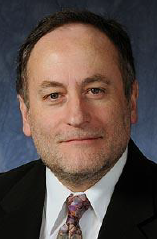
Prof.
Emilio Bunel, Catholic
University of Chile, Chile
|
Title: Lithium: A strategic mineral for Chile and South America.
Emilio Bunel received his M.S. in Chemical Engineering in 1980 from the University of Chile and his Ph.D. in chemistry from the California Institute of Technology in 1988. He began his professional career at DuPont Central Research as a member of the Catalysis Group working on new catalytic processes to produce nylon intermediates. In 2001 Bunel was hired by Eli Lilly to establish the Catalysis Group within the Discovery Research Organization. In 2003 he was appointed Associate Director at Amgen, Inc., and subsequently in January 2008, Research Fellow at Pfizer, Inc.
After spending twenty years in industry, in October 2008 Emilio Bunel was named director of the Chemical Sciences and Engineering Division at U.S. Department of Energy's Argonne National Laboratory, where he is responsible for directing a science-based research, development, and early-stage engineering organization that conducts both fundamental and applied research in chemistry and chemical engineering.
In November 2017 Emilio Bunel was named VP of Innovation at SQM which
is one of the largest lithium producer in the world. After a year with SQM Emilio Bunel joined the Catholic University, the largest private university in Chile as a professor with a joint appointment between the School of Chemistry and Pharmacy and the School of Engineering.
|
|
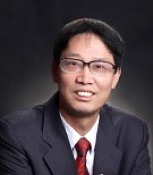
Dr.
Zi-Feng Ma, Jian Tong
University, Shanghai
|
Title: Design and preparation of layered transition metal oxide cathode materials for sodium ion battery.
Dr Zi-Feng Ma is a Distinguished Professor and Director of Shanghai Electrochemical Energy Devices (SEED) Research Center at Shanghai Jiao Tong University, where he is responsible for directing the research and development of advanced energy materials and electrochemical energy systems for electric vehicle and energy storage applications. Prof. Ma received his Ph D in Chemical Engineering from South China University of Technology, and an MSc and BE from Zhejiang University, China. He was the Chair of Department of Chemical Engineering at Shanghai Jiao Tong University from 1999 to 2011 and as a visiting scientist at US DOE’s Brookhaven National Laboratory during 2000 to 2001. Prof. Ma currently serves a Chief Scientist of the 973 Program of China on electric vehicle and energy storage related technologies. He is also the Chair of the Institute of Energy Storage Engineering of CIESC. He is a 2016 recipient of China Industry-University-Research Collaborative Award. Prof. Ma holds or has filed over 80 patents and patent applications and has over 320 publications.
|
|

Dr.
Wenjuan Liu Mattis,
Microvast Inc. USA
|
Title: Failure Mechanism of HE LIBs and its Mitigation.
Dr. Wenjuan Mattis received her Ph.D. degree in Material Science and Engineering Department at Pennsylvania State University and joined Dow Energy Material Department at The Dow Chemical, participating/leading the advanced battery technology development for application in EV and consumer electronics. She is currently the CTO of Microvast Inc., leading technology center, with 500+ scientists and engineers, developing high energy electrode materials, advanced cells, modules and packs, from lab scale to mass production, targeting safer, cheaper and higher performance energy storage devices, including but not limited to LIBs, for the applications in x-EV and EESS. Internally, she works with multiple businesses to maximize the innovation pipeline for Microvast, and take charge of all aspects of the global intellectual property portfolio. Externally, she interacts extensively with senior executives from OEMs cross technology, purchase, quality, production, strategy, finance, legal, and initiated several joint development projects on high energy, high performance LIBs for x-EVs. She is the leading PI of the joint project with BMW and ANL funded by DOE. She was elected as the youngest Board of Director of IMLB Association which is the largest and most prestigious battery association in the world responsible of organizing IMLB conference. And she also serves as Vice president of the International Automotive Battery Association. She recently received the Young Investigator Award from the International Coalition of Energy Storage and Innovation. She has published 20+ papers and 66 patents.
|
|

Prof.
Fouad Ghammous,
François Rabelais University, France
|
Title: Alternative electrolytes for electrochemical storage: from liquid to quasi-solid electrolytes.
Fouad Ghamouss is an associate professor in PCM2E Lab in the University of Tours. He is involved in several activities within the general area of electrochemical storage. He currently has a sub-grouping of ca 10 students and postdocs and takes parts in several national and international projects, especially for Li-ion batteries and supercapacitors. He is co-author of around 40 articles and 8 international patents in the field of electrochemical storage and his main interest is the development and the study of advanced electrolytes and electrodes materials.
|
|
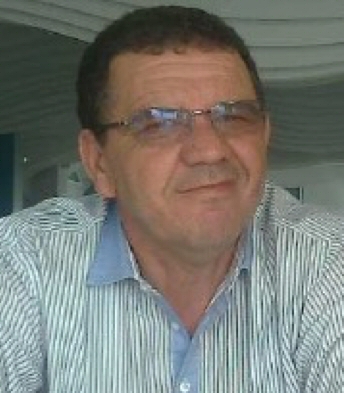
Prof.
Mustapha Ait Ali, University Cadi Ayad, Morocco
|
Title: Calcium Di-silicide, a Potential Precursor For Chemical Synthesis Of Functionalized Bi-dimensional Silicon Materials.
Professor AIT ALI Mustapha is full professor at the University Cadi Ayad in Marrakech. He is working in Organic Chemistry, Organometallic Chemistry and catalysis in the Department of Chemistry, Faculty of Sciences Semlalia, Marrakech-Morocco. His research interests include Coordination Chemistry, asymmetric Catalysis, Green chemistry and nanoparticles and the chemistry of nanostructured materials: graphene; silicene and phosphorene. Pr. AIT ALI M. was a guest professor at Villeneuve d’Ascq University, France, ENS Chimie de Rennes France and at the University of Cergy Pontoise France. He co-authored more than 60 papers published in leading refereed journals. He participated at more than 70 congress and supervised 10 PhD students. He also participated in 10 international cooperation projects and he was an active member in the organization of several international conferences.
|
|
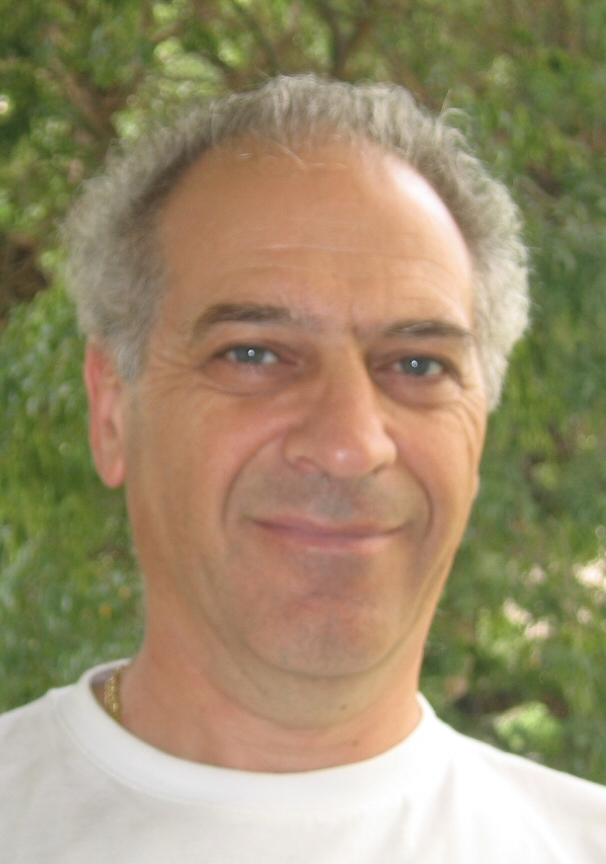
Dr.
Haik Jamgotchian, CINAM-CNRS, France
|
Title: Epitaxy Of The Zn Monolayer On Ag(111) And Ag(110) Substrates.
Dr. Haik Jamgotchian is a senior scientist at the CNRS since 1983. He obtained his PhD at the University of Aix-Marseille in 1989 on the theme "Research on the influence of natural convection on interfacial morphology during the solidification of binary alloys ". He studied, from 1990 to 1991 at the Aims Laboratory at Iowa State University on the "Morphological Instabilities of Growth on Transparent 2D Alloy Systems". From 1991 to 2004, he was interested by convective effects on the solidification front, in-situ and in real time, by comparative studies on Earth and in Microgravity. Then he specialized in the domain of the epitaxy and on the characterization of 2D structures. So he showed the formation of the different superstructures of silicene on silver substrates. Currently he is working on Zn and ZnO monolayers on silver substrates.
|
|
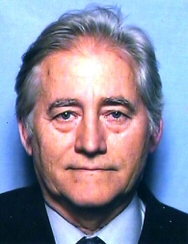
Dr.
Bernard Aufray
CINAM-CNRS, France
|
Title: Epitaxy Of The Zn Monolayer On Ag(111) And Ag(110) Substrates.
Dr Bernard Aufray is Directeur de Recherche émérite at the Centre Interdisciplinaire de Nanoscience de Marseille (CINaM). Dr. B. Aufray has worked on the formation of metallic surface alloys putting in light the key role played by both the diffusion and segregation phenomenon on stability and chemical composition of 2D superficial compounds.
He has also developed a new growth method of ultra-thin oxide layers on metallic substrates for an application to the Magnetic Tunnel Junctions. Dr B. Aufray worked on the growth of semiconductor (Ge,Si) on metallic substrates (Ag, Au, Ni, Cu,..); he is, with his team, at the origin of the silicene discovering.
h-index: ≥ 24
|
|

Prof.
Thomas Greber, Zurich University, Switzerland
|
Title: Single layer boron nitride membranes.
Professor Thomas Greber was Born and educated in Switzerland. He obtained his PhD at ETH Zürich on Two Aspects concerning 4f impurities on metals in 1990. From 1991 to 1994 he was Humboldt and SNF Gastforscher at the Fritz-Haber-Institut in Berlin, where he worked on non-adiabatic gas surface reactions. Since 1995 he is at the Physik-Institut of the University of Zürich. His main interests are sp2 hybridized single layer templates like hexagonal boron nitride on transition metals and molecules like magnetic endofullerenes on such surfaces that he investigates with photoemission, scanning tunneling microscopy and squid magnetometry. http://www.physik.uzh.ch/~greber/
|
|
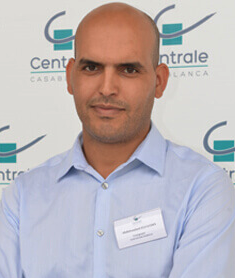
Prof.
Abdel
El Fatimy, Brno
University, Czech Republic
|
Title: Terahertz Graphene quantum dot bolometer.
Dr. Abdelouahad El Fatimy graduated from Montpellier University and received his master degree in solid state physics in 2004 and his Ph.D. in Condensed matter physics in 2007. He worked at postdoctoral researcher at the University of Bordeaux (2007-2008), at Tohoku University, Japan (2008-2009) and Cardiff University (2009-2012). From 2012-2014, he was a researcher at CNRS, France and in 2014, he joined the Georgetown University in the USA as a physicist. Since 2017, he is a physic professor at Ecole Centrale of Casablanca and since 2018, He is a senior physicist at the Central European Institute of Technology at Brno University, Czech Republic. He is the author of numerous publications and patents. A.El Fatimy research interests center around low-temperature physics, low-dimensional materials, molecular magnetic materials and single-photon detectors for space application.
|
|
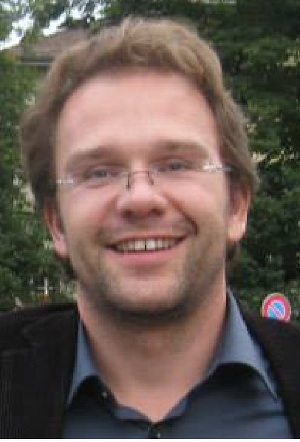
Dr.
Yannick
J. Dappe,
CNRS, CEA, France
|
Title: 2D Electrostatics in Transition Metal Dichalcogenides/Graphene Heterojunctions.
Yannick J. Dappe obtained his PhD at Strasbourg University in 2002 on the theory of nonlinear optics on metallic surfaces. He went to the group of Prof. F. Flores at the Autonomous University in Madrid (2004-2008) to learn Density functional Theory (DFT) methods and developed expertise in theory of van der Waals interactions in graphene and carbon materials, and electronic properties of molecules on surfaces. Since 2008, he is CNRS researcher, now at the Condensed Matter Physics Laboratory (SPEC) of the CEA Saclay. His main research interests focus on the theoretical study of graphene and 2D materials, and molecular electronics, using DFT and Keldysh-Green methods.
|
|
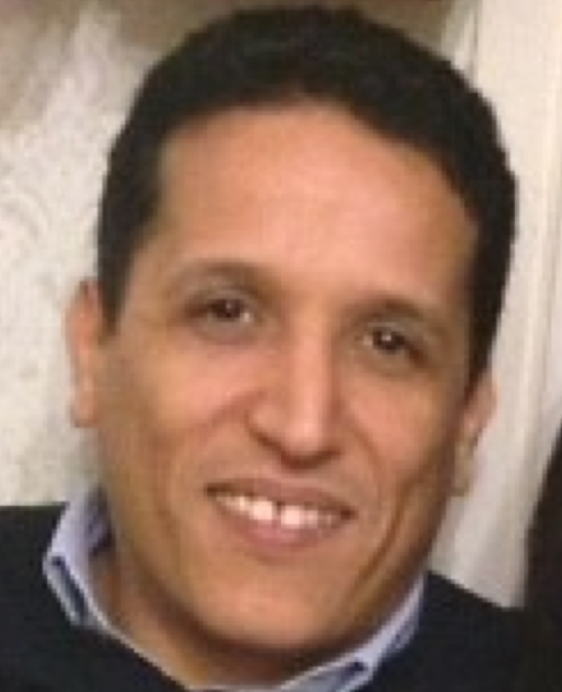
Dr.
Moulay Tahar Sougrati, CNRS-France
|
Title: High valence iron for energy storage.
Keynote speaker
and Chair of Spectroscopies for
Advanced Materials and Energy Conversion workshop.
Dr. Moulay Tahar SOUGRATI is a CNRS Research Engineer. He is in charge of the Mössbauer spectroscopy platform of Charles Gerhardt Institute (ICG). His work is focused on the application of Mössbauer spectroscopy to the characterization of materials for different topics such as Geology, Inorganic Chemistry and especially in the field of energy storage and conversion.
Since 2009, He has been working on different families of anode and cathode materials for Lithium and Sodium ion batteries including phosphates, sulfates, oxides, intermetallic alloys etc. He contributed to investigation of reaction mechanisms using operando Mössbauer spectroscopy. He is also applying Mössbauer spectroscopy to iron-based precious-metal-free catalysts for the oxygen reduction reaction. He is a member of the French Mössbauer Group (GFSM) and He is actively involved in the European (ALISTORE) and the French (RS2E) networks for electrochemical energy storage. A significant part of his work is carried out within international collaborations. |
|
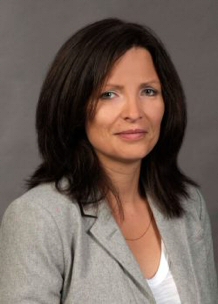
Prof.
Laurène Tetard, UCF, USA
|
Title: Nanoscale Functional Imaging Of 2d Materials For Energy, Nanoelectronics And Catalysis Applications.
Dr. Tetard is currently an Assistant Professor at the NanoScience Technology Center at the University of Central Florida (UCF) in Orlando, FL. She is a recent NSF CAREER awardee. Her group focuses on developing new nanometrology platforms to study complex systems including emerging materials for energy, biomaterials and plant-derived materials. Before she joined UCF in 2013, she was a staff researcher and Eugene P. Wigner fellow at the Oak Ridge National Laboratory. During her tenure at the national laboratory, she focused on the development of multi-frequency Atomic Force Microscopy for subsurface imaging and for infrared nanoscale spectroscopy. She received her PhD in 2010 from the University of Tennessee, Knoxville. Dr. Tetard has authored over 50 publications in refereed journals, several book chapters and has contributed to several patents, one of which received an R&D100 award in 2010.
|
|
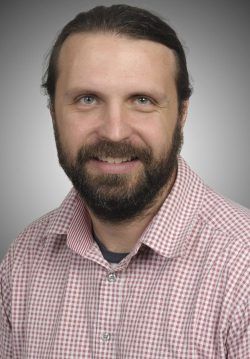
Prof.
William E. Kaden, UCF, USA
|
Title: Model Catalysis: From Development And Characterization Of Thin-films To Reactions Involving Supported Particles.
Dr. Kaden received his B.S. in Chemistry from the State University of New York at Oswego and his Ph.D. in Analytical Chemistry from the University of Utah before working as an Alexander von Humboldt postdoctoral fellow in the Chemical-Physics department at the Fritz Haber Institute of the Max Planck Society. He is currently an Assistant professor in the Department of Physics at the University of Central Florida, where he and his group explore overlapping areas of surface-science, catalysis, electronics, and planetary science.
|
|
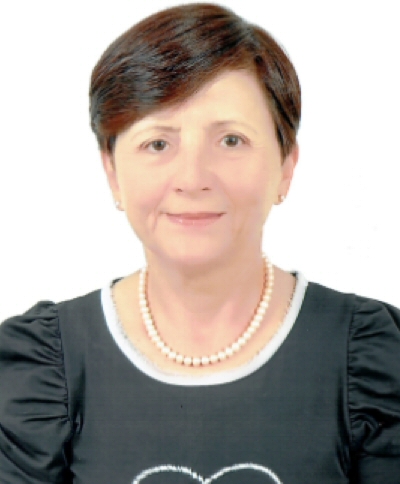
Prof. Najoua Kamoun, University
of Tunis, Tunisia
|
Title:
Investigations on the growth of
quaternary absorber materials for solar cell and photocatalytic
applications.
Najoua Turki-Kamoun is a full Professor at the Faculty of Sciences of Tunis (FST) University
of Tunis El Manar Tunisia. She obtained her PhD thesis in 1992 from FST and the
Habilitation (HDR) in Physics in Tunisia (FST) in 2000 and she is a Professor since 2007.
Her academic research focuses on Transparent conductive oxides (TCO : ZnO, SnO2, In2O3,
TiO2, MoO3, Fe2O3 and MgO), binary semiconductors (In2S3, SnS, CdS, Cu2S, ZnS, PbS and
MgS), ternary (CuInS2, In(2-x)GaxS2, P3HT and P3OT) and quaternary compounds (CuIn(1-
x)GaxS2 :CIGS, Cu2MSnS4 :CMTS where M=Zn; Fe or Mg), also Phthalocyaninewere grown.
All nanomaterials may be used for opto-electronic applications such as photocatalysis, gaz
sensors, solar cells, UV and IR detectors. These nanomaterials and thin films are grown by
different low cost techniques (spray pyrolysis, chemical bath deposition (CBD), spin coating,
electrodeposition and sputtering). She pulished about 100 papers in International Journals
with impact factor and supervised more than 20 PhD thesis. Since 1989 she is a researcher in
Physics Condensed Matter Laboratory (LPMC) where she was a head (2011-2015). In the
period 2013-2014 she occupied the post of General Director of Physico-Chemical Analysis
Institute (INRAP) in the Technopole of Sidi Thabet. She was a vice President of AUF
COMARES (for MAGHREB : 2013-2015) and she is, since 2013, a representative of the
Ministry of Higher Education and Scientific Research on the board of directors of the
National Metrology Agency (ANM). Since 2001 she is a Director of Synthesis of
nanomaterials and thin film semiconductors for optoelectronic applications, Physics
Condensed Matter Laboratory. In 2016 she is elected a TWAS (The World Academy of
Science) member. Since 2015 she is elected as ARA (American Romanian Academy) member
and since 2017 she is an International UK Research and Innovation Peer Review.
|
|
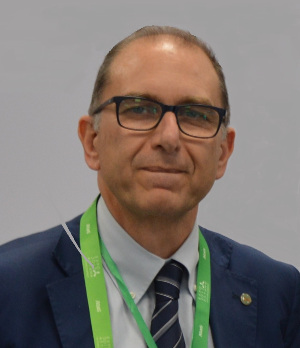
Prof. Antonio Terrasi, University of Catania, Italy
|
Title:
Nanostructures
And New Materials For Optoelectronics And Solar Cells.
• Full professor of experimental physics of matter at the University of Catania (Italy).
• Past visiting scientist at the Synchrotron Radiation Center of the University of Wisconsin-Madison (U.S.).
• Past scientific officer at the École Polytechnique Fédérale de Lausanne.
• Past coordinator and present member of the scientific board of the Ph.D. Course on Material Science and Nantechnology
• Past member of the Academic Senate of the University of Catania
• Past Delegated Director of the CNR-Institute of Microelectronics and Microsystems.
• Founder and Director of the permanent International School on Materials for Sustainable Development and Energy at the “Ettore Majorana Foundation and Centre for Scientific Culture” (Italy).
Research activity and expertise
• Absorption spectroscopies (EXAFS) and photoemission (XPS) with synchrotron radiation and laboratory X-ray sources;
• Electronic and structural analysis of semiconductor and insulating materials through electrical measurements, optical and electronic microscopies, Rutherford backscattering of light ions (RBS);
• Use of low-energy ion beams for assisted film modification and surface oxidation processes;
• Thin film growth by evaporation in ultra high vacuum systems.
• Formation of ion implantation clusters, low energy ion bombardment and ultra high vacuum evaporation;
• Studies of the electronic structure of metal / semiconductor interfaces and heterojunctions (photoelectron spectroscopies);
• Electronic structure of superconductors at a high critical temperature (photoelectron spectroscopy);
• Electronic structure of low-dimensional compounds and study of Charge Density Waves transitions (photoelectronic spectroscopy);
• Silicide formation and silicon film deposition with ion beam-assisted evaporation processes (CoSi2, -FeSi2, Al / Si) (electron microscopies, photoemission spectroscopies, RBS);
• Formation of ultra-thin SiO2 films by high temperature thermal processes or at room temperature processes assisted by ion beams (electrical measurements, electron microscopes, photoelectron spectroscopies);
• Er-O-doped growth for ion implantation and for MBE epitaxial deposition (electrical measurements, optical measurements, microscopy, EXFAS spectroscopy, RBS);
• MBE epitaxial growth of Si doped with B for diffusion studies;
• MBE epitaxial growth of Si, Si (1-x) Ge (x) and Si (1-x) C (x) (structural and electrical measurements) and of Ge and SiGe nanostructures;
• Synthesis and structural-electrical-optical characterization of Si and Ge nanocrystals in oxide, nitride and Si carbide for applications in photodetectors and third generation photovoltaic cells.
• Synthesis and characterization of Ge nanocrystals by colloidal route for photodetector applications.
• Synthesis and characterization of thin films of Transparent Oxides Conductors (TCO) and Transparent Conductor Materials (TCM) based on TCO / Ag / TCO nanometric multilayers, also with Ag nanogrids, for photovoltaic applications.
More than 110 scientific publications on international journals.
|
|
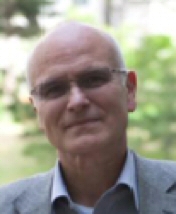
Dr. Didier Pribat, Ecole
Polytechnique, France
|
Title:
Novel approaches for building energy harvesting and storage devices: the use of 1D and 2D nanomaterials.
Keynote speaker
Didier Pribat has more than 35 years of experience (including 23 in Industry) in materials sciences related to semiconductor growth and processing (heteroepitaxy of Si on cubic zirconia, Si on insulators, III-Vs on Si, poly Si on glass for display addressing, Si nanowires, carbon nanotubes, graphene and more recently transition metal dichalcogenides) as well as energy harvesting and storage technologies. Even though he has spent most of his career in industry, D. Pribat has authored or co-authored about 200 publications in peer-reviewed conference proceedings and SCI journals. 15 of his papers have been cited more than 100 times each. His total number of citations is around 7200 (Google Scholar). He has spent his career successively in Thomson-CSF (which became Thales in 2000), CNRS (Ecole polytechnique), Sungkyunkwan University (Suwon, Korea), South East University (Nanjing, China) and he is now back to CNRS in France (Institut Polytechnique de Paris).
|
|
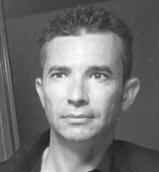
Prof. Herve
Martinez, Deputy director of IPREM,
University of Pau et des Pays de l’Adour,
France
|
Title: Surface and Interface phenomena in Li- and Na-Ion Batteries: A combined ToF-SIMS and XPS study.
Hervé Martinez is full professor in solid-state chemistry at the Université de Pau et des Pays de l’Adour in France. He is at present deputy director of UPPA’ Faculty of Science and Technology for Energy and Environment (STEE). He was recently (2015-2018) deputy director of IPREM, a CNRS laboratory (IPREM: Institute of Analytical Sciences and Physical Chemistry for the French National Centre for Scientific Research), and director of the chemistry department of UPPA.
Prof. Martinez’s current research fields include the fundamental knowledge of materials surface and interface applied to energy storage (Li(Na) – ion batteries, redox processes and surface phenomena during electrochemical cycles, aging phenomena…), to nanomaterials for health and to the identification and understanding of corrosion process for materials used in aeronautics or automotive vehicles. He is a specialist of surface materials and physical-chemistry with a special interest for electronic and photoelectronic spectroscopy (XPS-AES), mass spectroscopy (TOF-SIMS), scanning probe microscopies (AFM-STM) and theoretical calculations (DFT codes). Within these different fields, he has published 130 scientific papers and book chapters with a number of citations around 3000 and an h-index of 34 (SCOPUS). He was/is coordinator and principle leader of more than 20 research and collaborative projects and he supervised 18 Ph.D. and 7 post doctoral fellows.
|
|
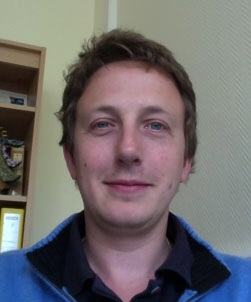
Prof. Michael Deschamps
Université d’Orléans,
France
|
Title: 23Na solid and liquid-state NMR for battery materials and electrolytes.
Michaël Deschamps is an associate professor of materials chemistry at the University of Orléans (France), and heads the “NMR and Materials” group at the CNRS laboratory CEMHTI. M.Deschamps received his PhD in 2001 at the Ecole Normale Superieur in Paris, in the group of Prof. G.Bodenhausen, with a thesis on the Fluctuations of Interactions in Nuclear Magnetic Resonance. Afterwards, M.Deschamps was awarded an EMBO fellowship at the University of Oxford where he worked on the characterisation of fibronectin proteins with residual dipolar couplings in NMR. He was recruited in 2005 at the University of Orleans as a Maitre de Conférence and worked on inorganic glasses and hybrid materials using NMR as a tool for structural characterisation. In 2013, he was promoted to professor, and now, Prof. M.Deschamps’ research is focused on the characterization of materials by NMR, with applications in batteries and supercapacitors, and he authored around 60 peer-reviewed papers.
|
|
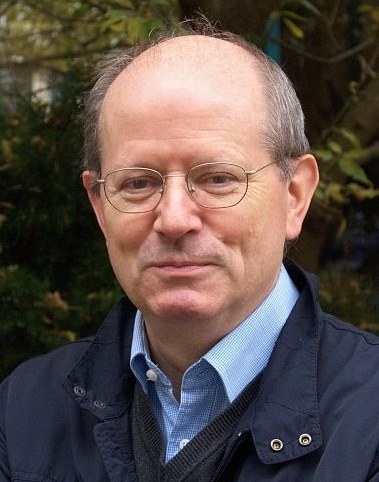
Prof. Adam
Kiejna, University of Wroclaw, Poland
|
Title: Gold subnano-structures on iron oxide surfaces and their interaction with CO.
Professor Adam Kiejna is full professor and head of the Materials Physics and Surface Processes Group at the Institute of Experimental Physics, University of Wroclaw, Poland. He obtained his PhD at the University of Wroclaw in 1981 and habilitation in 1991. He worked as a postdoctoral fellow at the University of Geneva, a Humboldt Fellow at the University of Munich and at the Fritz-Haber Institute in Berlin. He worked as a visiting professor at the Chalmers University of Technology, at the Helsinki University of Technology (now Aalto University), and spent extended stays as a visiting scientist at the University of Central Florida, and at the University of São Paulo. In his research he applies density functional theory based methodology to study electronic and geometry structure of clean and adsorbate covered metals, metal oxide surfaces and interfaces, supported metal clusters. He is member of the Editorial Board of the Electronic Structure journal.
|
|
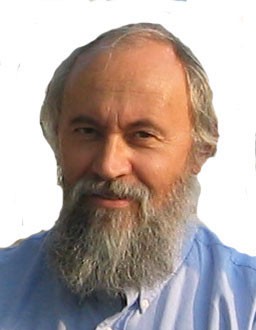
Dr. Claude Henry, CINAM-CNRS, France
|
Title: Regular arrays of metal clusters on ultrathin alumina films as model catalysts.
Keynote speaker
and Chair of the Catalysis workshop
Dr Claude R. Henry is Emeritus Research Director at CNRS. He graduated in physics from Aix-Marseille University. He obtained PhD in 1983 on adsorption studies on surfaces by modulated molecular beams. After, he has been Postdoc at IBM ARC and at Stanford University. He started reactivity studies on supported clusters by a combination of molecular beams methods, electron spectroscopies, STM, AFM and TEM. He published over 200 scientific papers. In 2001 he received the Humbodt-Gay Lussac Research Prize. He was founder and Director of the CINaM (Interdisciplinary Nanoscience Center of Marseille) from 2007 to 2014. He has been invited Professor at EPFL (Lausanne), Fritz Haber Institut (Berlin) and Cluster Research Laboratory from Toyota Technological Institut (Tokyo). Now he is working on the reactivity of regular arrays of metal clusters grown on nanostructured oxide surfaces.
|
|

Dr.
Laurent Piccolo,
CNRS, Lyon Unversity, France
|
Title: Nanocatalysis for energy applications.
Dr. Laurent Piccolo is a materials scientist graduated from Aix-Marseille University. He obtained his PhD in 1999 with a thesis on supported model catalysts in C.R. Henry’s group. After a post-doct at CEA Saclay (Paris), he was recruited as a CNRS researcher at IRCELYON in 2001, and defended his “research supervision habilitation” on surface science applied to gold catalysis in 2007. He was recently a visiting scientist at the Technical University of Barcelona. He has co-authored 80 publications in the fields of alloy surfaces, gold catalysts, nanoalloys, and bifunctional catalysts for applications to CO conversion, selective hydrogenation and fuel upgrading. http://laurentcp.googlepages.com/
|
|
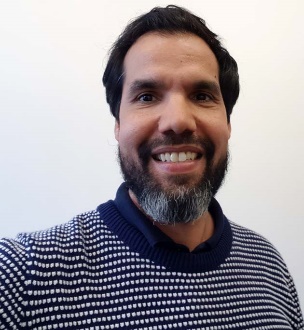
Prof.
Ahmed Naitabdi,,
Sorbonne Unviersity, France
|
Title: In situ investigation of chemical reactions on metal-oxide model nanocatalysts: near-ambient pressure XPS and STM studies.
Ahmed NAITABDI is associate professor in physical-chemistry at Sorbonne Université (SU) in Paris. He is also deputy-director of Laboratoire de Chimie Physique Matière et Rayonnement at SU. He earned his PhD in condensed matter physics in December 2004 from Université de Starsbourg, France. Afterwards, he was a Postdoctoral research fellow from 2005 to 2008 in the Department of Physics at University of Central Florida, Orlando, USA where he worked on the synthesis and investigations of size-selected metallic nanoparticles relevant for heterogeneous catalysis applications. His current research focuses on Nanocatalysis, in particular on the study, with state-of-the-art in situ spectroscopic techniques, of chemical reactions on metal oxide nanoparticles with potential view on applications in alternative clean energy generations systems.
|
|
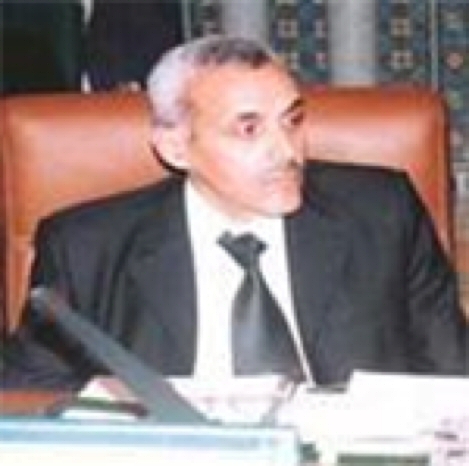
Prof. Abdelilah Benyoussef,
MASCIR Fondation, Morocco
|
Title: Organic–inorganic Hybrid Perovskites: Density Functional Theory .
Professor Abdelilah Benyoussef received his “Doctorat d’état” degree from the Paris-Sud University in 1983. He is a permanent member of the Moroccan Hassan II Academy of Science and Technology, since 2006. He is associate professor in the materials and nanomaterials center of the Moroccan Foundation for Advanced Science, Innovation and Research. He is National coordinator of the Competences Pole of Condensed Matter and Systems Modeling. He is also an editor in chief of the Moroccan Journal of Condensed Matter. He is President of the Moroccan Society of Statistical Physics and Condensed Matter. He has been visiting professor in many research centers, laboratories and Universities in Belgium, Canada, Egypt, France, Germany, Japan, Spain, Tunisia, and United states. The main interest topics of Abdelilah Benyoussef are Ab initio calculation and Monte carlo method in modeling and simulation of new materials for renewable energy; Magnetism and phase transition in condensed matter; complex systems and critical self-organization in statistical physics. He is a co-author of more than 400 research publications and book chapters and about 100 conference presentations including numerous invited papers and talks. He has co-chaired or co-organized several international conferences. He holds a number of patents and supervised 40 post graduate research candidates.
|
|

Prof. Khalid
Nouneh, Ibn Tofail University, Morocco
|
Title:
Low Cost Solution Processing And Growth Of Thin Films And Nanostructures
For Energy And Environment Applications.
Khalid Nouneh is
a Professor in Ibn Tofail University Kenitra. He graduated and obtained
his PhD in Physics at ELIAUS Perpignan and GES Montpellier II University
(France) in December 2006. Then, he awarded in 2007, the prestigious
JSPS Fellowship from the Japanese Society for the Promotion of Science
as Postdoctoral in the International Collaboration Center ICC of
Kyoto University in Japan. He was also junior researcher of Inanotech-MAScIR
(Moroccan Advanced Science Innovation and Research). Prof. NOUNEH
has published over 38 articles in peer-reviewed journals. He coordinates
and participated in 9 national and international cooperation projects
related to energy and environment applications (IRESEN, PPR2016,
OCP-CNRST, Fp7: Eurosunmed 2013; PHC-Maghreb etc.). In addition,
he is active member of Moroccan Association of the Advanced Materials
(A2MA), la Société Marocaine d’Optique SMOP, et Renewable Energy
University Network (REUNET).
|
|
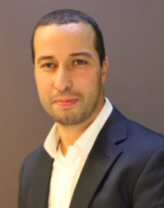
Dr.
Abdelfettah Mahmoud, Liège University, Belgium
|
Title: Recycled Silicon from solar panels as anode material for Li-ion batteries with excellent electrochemical performance.
Dr Abdelfattah Mahmoud is a Postdoctoral researcher at GreenMat Lab of the university of Liège (Belgium) since December 2015. His research concerns the development of the electrode materials for Alkali-ion batteries, he is in charge of the analytical platforms of electrochemistry and Mössbauer Spectroscopy. Before joining the university of Liège, Abdelfattah was Postdoctoral researcher during 2 years at Forschungszentrum Jülich, JCNS-2 (Germany). His research focused on the characterization of electrochemically active materials by nuclear resonance and neutron scattering techniques. He graduated and obtained his PhD in Materials Science in December 2012, from Cadi Ayyad university in Marrakech (Morocco). His PhD focused on the development of three electrode materials (MnSn2, LiCo2/3Ni1/6Mn1/6O2, Li4Ti5O12) for high energy density lithium-ion batteries. He has been visiting researcher in many research centers, laboratories and Universities: Oak Ridge National Lab (USA, 2018), Montpellier University (France, 2011) and the Institute of Material Science of Madrid (Spain 2010 and 2012). He authored and co-authored more than 40 peer-reviewed papers, 60 conference papers, invited talks and extended abstracts.
|
|
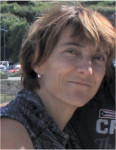
Dr.
Laure Monconduit,
CNRS, ICGM Montpellier,
France
|
Title: Siloxene: A Potential Layered Silicon Intercalation Anode For Li, Na And K-ion Batteries.
After an academic background in the University of Orsay, and a Master in Chemistry of Materials at the University of Nantes, she graduated (PhD) in 1994 from Nantes University at the Institut des Matériaux Jean Rouxel (France) and spent one year as Post-Doc at Max Planck Institute in Stuttgart (Germany). She was appointed Chargée de Recherches at CNRS in 1996 and promoted Research Director in 2011. First years at CNRS were devoted to research of new materials with original structure and properties. After the discovery of a new lithium rich pnictogenides family she progressively shifted to materials for Li batteries.
Her current research directions include the synthesis and characterization of new electrodes materials for Li-ion, and for post-Li systems: Na-, Mg-, Ca- ion batteries, the improvement of their performance by playing i) on the nano-structuration and the electrode formulation, ii) on the confinement of active element in carbon matrix. The understanding of the electrochemical mechanism through operando characterization technics (XRD, IR-ATR, Raman, Mössbauer spectroscopy) is the center of her research. She is leading the thematic group Li-ion of the European network ALISTORE-ERI and co-responsible of the same thematic group in French network RSE2. LM was leader or participant of numerous scientific projects, National projects (ANR, CNRS), European or International project (FP7, H2020, bilateral (Israel, UK)). She has also numerous collaborations with industrial partners (Saft, Umicore, Total S.A., Hutchinson, Nanomakers...). She is the author of 150 articles in international peer reviewed journals, of 10 patents, of 5 book chapters, of more than 40 oral presentations in international conferences including 18 invited lectures. She is editor of 2 volumes for the Royal Society.
.
|
|
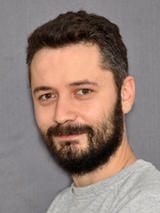
Dr.
Dimitri Bessas,
Beamline Scientiist, ESFRE
France
|
Title: Nuclear Resonance Scattering For Energy Applications.
Dr. Bessas started a PhD project on functional materials for energy at Forschungszentrum Juelich in Germany.
He received his doctoral degree in 2012 from the University of Liege in Belgium. He has very good experience in X-ray scattering and neutron techniques, obtained in more than 30 research proposals carried out at major large-scale facilities around the world, and a deep knowledge in the application of these techniques to the investigation of the structure and the dynamics of condensed matter.
His research interests span from energy conversion/harvesting/storage/transport to data storage, catalysis, and life sciences.
Currently he is working as a beamline scientist at the Nuclear Resonance beamline ID18 at ESRF.
|
|
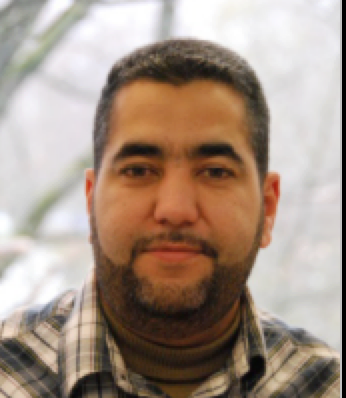
Dr.
Abdelhafid Aqil
Liège University, Belgium
|
Title: Bioinspired Redox-active Catechol-bearing Polymers As Promising Organic Cathodes For Lithium Storage.
Abdelhafid Aqil, is research assistant of Prof. Christine Jérôme at the Centre for Education and Research on Macromolecules (CERM), University of Liège (Belgium). He studied chemistry at the University of Liège, where he graduated in organic and macromolecular chemistry in 2004. In 2008, he received his Ph.D. in chemistry for his work on synthesis of novel functional nanoparticles under supervision of Prof. Robert Jérôme. His primary area of research expertise is synthesis and design of new functional organic materials especially for biomedical applications and energy storage applications. His present focus in the field of energy application is the development of a new organic cathode materials. He authored and co-authored more than 35 peer-reviewed papers, 30 conference papers and co-inventor of 2 patents.
|
|
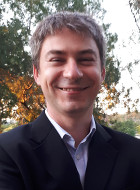
Dr
Alexey M. Glushenkov, Australian National University, Australia
|
Title: Sodium-ion Capacitors: An Overview Of Research Developments.
Dr Alexey M. Glushenkov is a Fellow in the Battery Storage and Grid Integration Program at the Australian National University. He is a research leader in battery materials within this initiative. Previously, Dr Glushenkov had research appointments at Boreskov Institute of Catalysis (Russia), Australian National University, Deakin University, Melbourne Centre of Nanofabrication, the University of Melbourne (all - Australia) as well as Drexel University (the US). His research interests are centred on electrochemical energy storage in metal-ion batteries, electrochemical supercapacitors and hybrid metal-ion capacitors as well as materials that enable these energy storage cells. He was a winner of 2014 Vice-chancellor’s Award for Research Excellence at Deakin University (early career researcher) and was a 2017 Emerging Investigator of Journal of Materials Chemistry A. Since 2016 Dr Glushenkov serves as an associate editor of RSC Advances (Royal Society of Chemistry, the UK).
|
|
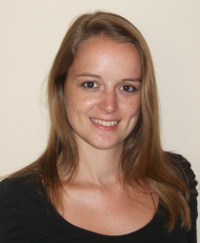
Dr.
Marine REYNAUD
CIC energiGUNE, Spain
|
Title: Characterization Of Microstructural Disorder In Battery Materials With Faults.
Marine Reynaud is associate researcher at CIC energiGUNE (Basque Country, Spain). Her research has been focused on the development of new electrode materials for Li-ion and Na-ion batteries for the last ten years, first as PhD student in the group of Prof. Jean-Marie Tarascon at LRCS, University of Picardie Jules Verne (France), where she completed her PhD dedicated to sulfate-based cathode materials in 2013, and next in the group of Dr. Montse Casas-Cabanas at CIC energiGUNE. Marine Reynaud has expertise in the structure determination and (micro)structural characterization of layered and polyanionic compounds using diffraction techniques. She also has strong experience in inorganic syntheses and electrochemical characterizations, as well as knowledge in transmission electron microscopy, magnetic measurements, solid-state NMR and Mössbauer spectroscopies. She is co-author of 28 peer-reviewed papers, one patent and one refinement program (FAULTS).
|
|

Prof.
Lorenzo Stievano,
Universityof Montpelier,
France
|
Title: Advantages and limits of operando X-ray absorption spectroscopy in the study of Sb-based negative electrode materials for Na-ion batteries.
Lorenzo Stievano received his PhD in 1995 from the University of Ferrara with a thesis on the application of Mössbauer spectroscopy with common and less common isotopes to the study of heterogeneous catalysts. After two post-docs at the Institut de Recherches sur la Catalyse et l’Environnement in Villeurbanne (France) and at the Laboratoire de Réactivité de Surface in Paris (France), he was appointed Maître de Conférences at the Université Pierre et Marie Curie in Paris. During his work in Paris, he developed with Prof. Jean-François Lambert a completely new research subject on the study of the absorption and the reactivity of biological molecules on the surface of inorganic oxides.
After being appointed Professor at the Université de Montpellier in September 2009, Lorenzo Stievano joined the ICGM and started working in the fields of electrochemical energy storage. He is currently involved in several academic and industrial projects on lithium and post-lithium batteries.
Lorenzo Stievano is an expert in the characterization of functional inorganic materials by spectroscopy and diffraction techniques. He published more than 150 scientific papers in the different fields of inorganic chemistry, heterogeneous catalysis, materials and surface science since 1995.
|
|
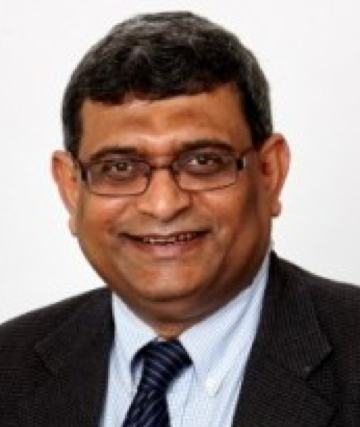
Prof. Singh Raman, Monash Univ Clayton
Campus, Australia
|
Title: Graphene: Novel Nano Approach for Remarkable Corrosion Resistance.
Professor Raman Singh’s primary research interests are in the relationship of Nano-/microstructure and Environment-assisted degradation and fracture of metallic and composite materials, and Nanotechnology for Advanced Mitigation of such Degradations. He has also worked extensively on use of advanced materials (e.g., graphene) for corrosion mitigation, and stress corrosion cracking, and corrosion and corrosion-mitigation of magnesium alloys (including for the use of magnesium alloys for aerospace, defence and bioimplant applications).
Prof Singh’s professional distinctions and recognitions include: editor of a unique book on non-destructive evaluation (NDE) of corrosion, editor of a book on cracking of welds, editor-in-chief of a journal, member the Editorial Boards of a few journals, leader/chairperson of a few international conferences and regular plenary/keynote lectures at international conferences, over 220 peer-reviewed international journal publications, 15 book chapters/books and over 100 reviewed conference publications, and several competitive research grants (that includes 4 Discovery, 7 Linkage and one ITRH grants of Australian Research Council).
|
|
|
|